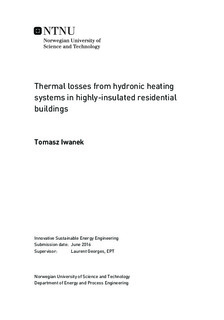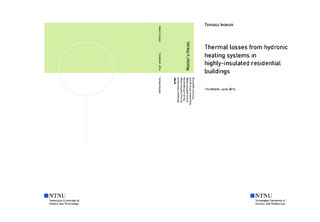| dc.description.abstract | Many of the building concepts for current and future-efficient buildings are based on highly-insulated envelopes, such passive houses, zero emission buildings or nearly-zero energy buildings (nZEB). As the building is highly-insulated, it is possible to simplify the space-heating distribution system and reduce the number of heat emitters to a few elements. One solution is to use a hydronic distribution equipped with few low-temperature radiators, for instance, one in each floor as well as one in the bathroom. This solution reduces thermal losses from the pipes and the investment, but theoretically provides for less thermal comfort than complete loop. This Thesis investigates thermal conditions in the building with both systems. Studied cases contribute to the worst conditions, which may happen in the winter and also more probable situations in order to be as close to reality as possible. Two systems are investigated also in terms of efficiency. Losses from pipes are considered as recoverable internal gains, and two variables of distribution coefficient are counted. | |

